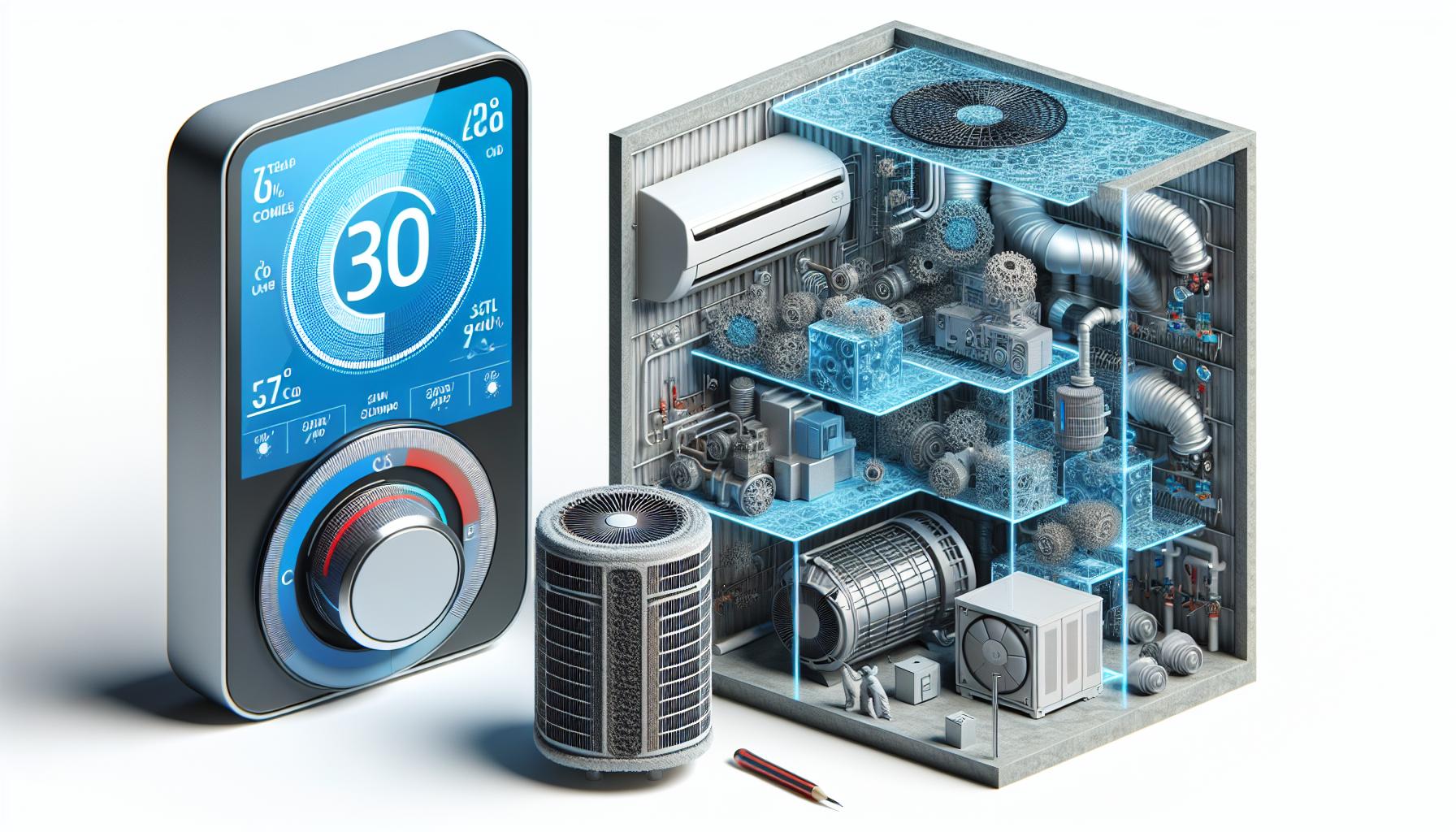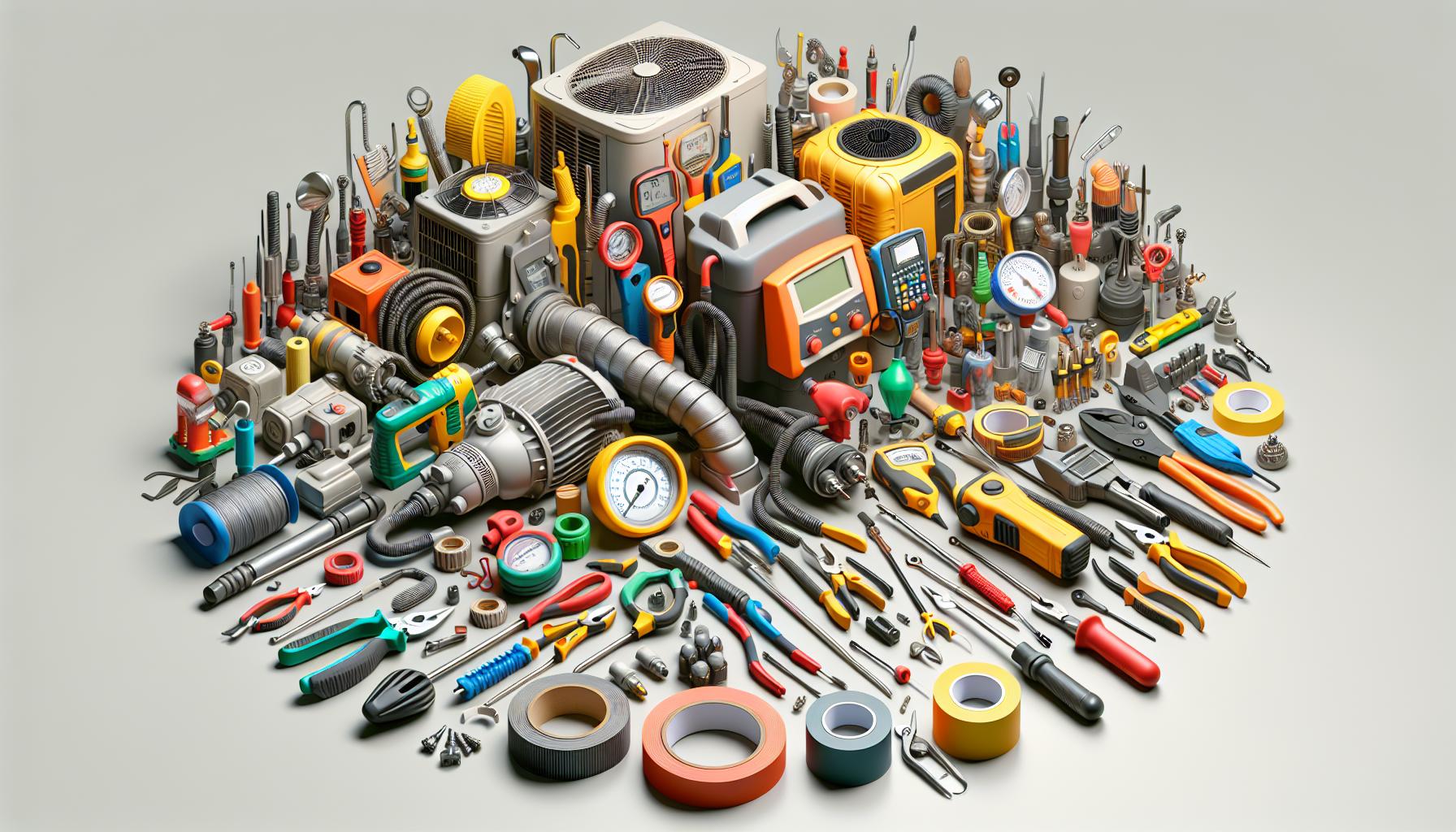So, you’re looking to beat the Florida heat while keeping your energy bills in check? We’ve got you covered with some top-notch energy-saving AC strategies tailored specifically for the Sunshine State. In a place where air conditioning is a necessity rather than a luxury, optimizing your cooling system is crucial to stay comfortable without breaking the bank.
When it comes to staying cool in Florida, it’s all about finding that sweet spot between comfort and efficiency. Our expert tips and tricks will help you make the most out of your AC unit, ensuring you stay cool and collected while also being mindful of your energy consumption. From simple adjustments to more advanced techniques, we’ll guide you through the ins and outs of energy-saving AC strategies that are perfect for Florida’s unique climate.
Understanding Your AC System
When it comes to optimizing your AC system, understanding its components and functionality is key. Let’s break down the basics to help you make informed decisions and improve energy efficiency in your Florida home.
For Beginners: Grasping the Fundamentals
- Thermostat Settings: Start by setting your thermostat to an efficient temperature (around 78°F) when you’re at home and higher when away.
- Air Filters: Regularly check and replace dirty filters to ensure proper airflow and system performance.
- Vents and Airflow: Keep vents unobstructed to maintain consistent airflow throughout your space.
For Intermediate Users: Enhancing Performance
- Sealing Leaks: Inspect windows, doors, and ductwork for air leaks that can lead to energy waste. Seal these areas to improve cooling efficiency.
- Programmable Thermostats: Consider upgrading to a smart thermostat for precise temperature control and energy savings.
- Regular Maintenance: Schedule annual professional maintenance to keep your AC system running smoothly and preventive care.
- Ductwork Inspection: Assess your ductwork for leaks, gaps, or restrictions that may hinder airflow. Seal and insulate ducts for maximum efficiency.
- Zoning Systems: Install zoned cooling to direct air where needed, optimizing comfort levels and minimizing energy consumption in different areas of your home.
- Advanced Controls: Explore variable-speed technology and energy recovery ventilators for cutting-edge ways to enhance AC efficiency.
By empowering yourself with knowledge about your AC system, you can take proactive steps to increase comfort while reducing energy costs in your Florida home.
Setting the Right Temperature

For Beginners: Basic Guidelines
When it comes to Florida’s hot climate, setting the right temperature on your AC unit can make a significant impact on energy consumption and comfort. For beginners, it’s crucial to follow these guidelines:
- Set the thermostat to 78°F when you’re at home to balance comfort and energy efficiency.
- Raise the temperature to 82°F or higher when you’re away to save on cooling costs.
- Consider using a smart thermostat for easy temperature adjustments based on your schedule.
For Intermediate Users: Fine-Tuning Tips
If you’re looking to optimize your AC system further, here are some intermediate tips to consider:
- Utilize the “auto” setting on your thermostat instead of “on” to prevent constant cycling.
- Make sure your AC unit is** not obstructed by furniture or curtains** to allow proper airflow.
- Consider installing ceiling fans to help circulate cool air more effectively.
- Invest in a zoning system to regulate temperatures in different areas of your home.
- Schedule regular ductwork inspections to ensure optimal air distribution.
- Explore advanced controls like humidity sensors or occupancy sensors for enhanced efficiency.
| Temperature Recommendation: | 78°F at home, 82°F or higher when away |
|---|---|
| Benefits: | Balanced comfort and energy efficiency |
| Additional Tip: | Consider using a smart thermostat for easy adjustments based on your schedule. |
Utilizing Smart Thermostats
Smart thermostats are a game-changer when it comes to optimizing energy efficiency and comfort in Florida homes. Whether you’re a beginner, intermediate user, or an expert, there are various ways to leverage these devices effectively.
For Beginners: Mastering the Basics
- Install a Smart Thermostat: Start by choosing a reliable smart thermostat compatible with your HVAC system.
- Set Basic Schedules: Program your thermostat to adjust the temperature based on when you’re home or away.
- Learn Remote Control: Familiarize yourself with using your smartphone or voice commands to adjust settings from anywhere.
- Monitor Energy Usage: Take advantage of the energy usage reports provided by smart thermostats to track and optimize your consumption.
For Intermediate Users: Enhancing Your Setup
- Utilize Geofencing: Use geofencing features to automatically adjust the temperature when you leave or return home.
- Integrate with Other Smart Devices: Enhance convenience by integrating your smart thermostat with other smart home devices.
- Explore Energy-Saving Modes: Experiment with eco-friendly modes and features to further reduce energy consumption.
- Utilize Room Sensors: Place room sensors strategically to ensure your smart thermostat effectively regulates temperatures in different areas of your home.
- Fine-Tune Temperature Settings: Customize temperature settings based on your comfort preferences and daily routines.
- Utilize Learning Algorithms: Let your smart thermostat learn your habits and adjust settings automatically for optimal comfort and efficiency.
- Monitor Humidity Levels: Use humidity sensors to maintain ideal indoor humidity levels for enhanced comfort.
- Utilize Smart Home Integration: Incorporate your smart thermostat into a comprehensive smart home system for seamless control and energy optimization.
Smart thermostats offer a myriad of benefits for energy-conscious homeowners in Florida, providing convenience, savings, and enhanced comfort. Whether you’re just starting or looking to maximize your smart thermostat’s potential, these tips cater to various experience levels for an optimized home climate control experience.
Maximizing Air Circulation
When it comes to maximizing air circulation in your Florida home, proper ventilation is key to ensuring efficient cooling and improving indoor air quality. Let’s explore strategies tailored to different experience levels:
For Beginners: Enhancing Air Flow
- Keep interior doors open to allow air to circulate freely.
- Use ceiling fans to complement your AC system and distribute cool air more effectively.
- Regularly clean and replace HVAC filters to maintain optimal airflow.
For Intermediate Users: Optimizing Air Distribution
- Position furniture away from vents to prevent obstruction of airflow.
- Consider installing a whole-house fan to promote cross-ventilation and enhance cooling efficiency.
- Utilize portable fans strategically in areas that require additional airflow.
- Implement zoning systems to control airflow in different areas of your home based on usage patterns.
- Invest in a programmable thermostat with fan control to customize air circulation schedules.
- Explore the benefits of ductwork modifications to optimize airflow distribution throughout your property.
By incorporating these air circulation strategies into your HVAC management routine, you can enhance overall comfort and maximize energy efficiency in your Florida home.
Regular Maintenance Tips

For Beginners: Mastering the Basics
- Change Filters Regularly: Start by changing HVAC filters every 1-3 months to ensure efficient airflow.
- Clean Vents and Registers: Regularly clean vents and registers from dust and debris to maintain optimal air circulation.
- Inspect Insulation: Check for any damaged insulation around windows and doors to prevent air leaks.
- Schedule Professional Inspections: Annual AC maintenance by a professional technician can help detect issues early.
For Intermediate Users: Enhancing Your Maintenance Routine
- Calibrate Thermostat: Ensure your thermostat is calibrated correctly for accurate temperature control.
- Check Refrigerant Levels: Monitor and refill refrigerant levels as needed to optimize AC performance.
- Inspect Ductwork: Seal any leaks in ductwork to prevent energy loss and ensure efficient cooling.
- Lubricate Moving Parts: Regularly lubricate moving parts to reduce friction and extend the lifespan of your system.
- Consider Upgrading to a Programmable Thermostat: Invest in a smart or programmable thermostat for advanced temperature control.
- Perform Seasonal Tune-Ups: Schedule seasonal tune-ups to keep your AC system running smoothly throughout the year.
- Implement Air Duct Cleaning: Hire professionals for air duct cleaning to remove dust, debris, and allergens for better indoor air quality.
- Evaluate Energy Efficiency: Conduct an energy audit to identify areas for improvement and enhance overall efficiency.
| Beginners’ Tips | |
|---|---|
| Change Filters | Every 1-3 months |
| Clean Vents | Regularly |
| Inspect Insulation | Around windows and doors |
| Professional Inspections | Annually |
| Intermediate Users | |
|---|---|
| Calibrate Thermostat | Check calibration |
| Check Refrigerant Levels | Refill when needed |
| Inspect Ductwork | Seal leaks |
| Lubricate Moving Parts | Regularly lubricate |
| Experts’ Recommendations | |
|---|---|
| Upgrade to Programmable Thermostat | Smart or programmable |
| Seasonal Tune-Ups | Regular schedule |
| Air Duct Cleaning | Professional service |
| Evaluate Energy Efficiency | Conduct an audit |
Conclusion
In Florida, optimizing our AC systems is crucial for energy efficiency and cost savings. By following these maintenance strategies, we can enhance air quality and cooling performance in our homes. From simple tasks like changing filters to more advanced techniques such as sealing ductwork leaks, each step plays a vital role in maximizing our AC’s efficiency. Remember, regular inspections and tune-ups are key to ensuring our systems run smoothly. By implementing these energy-saving practices, we not only reduce our environmental impact but also enjoy a comfortable indoor environment year-round. Let’s prioritize these strategies to keep our AC systems running efficiently and effectively in the Florida heat.

